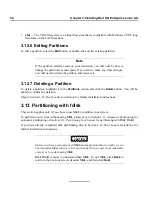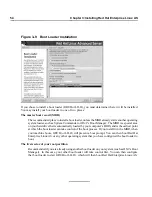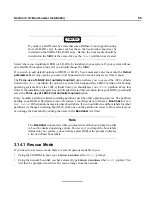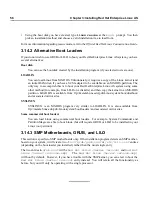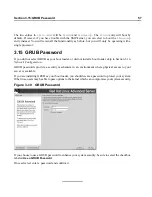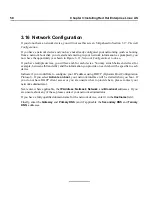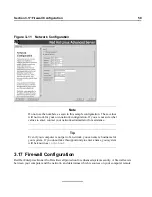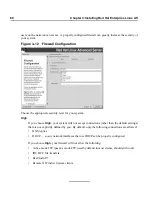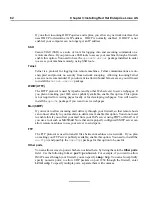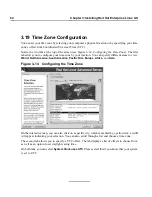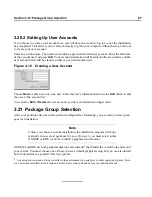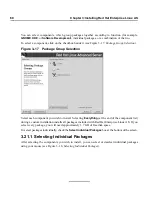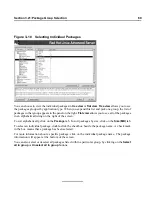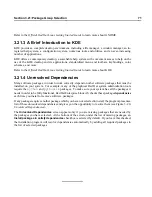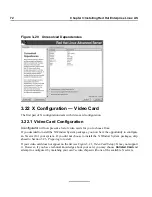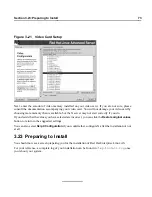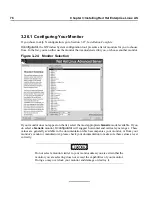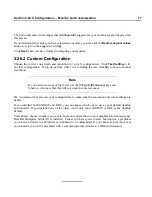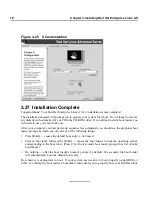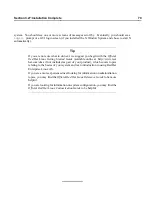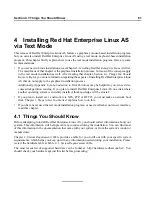
66
Chapter 3:Installing Red Hat Enterprise Linux AS
Use the root account only for system administration. Create a non-root account for your general use
and
su -
to root when you need to fix something quickly. These basic rules will minimize the chances
of a typo or an incorrect command doing damage to your system.
Tip
To become root, type
su -
at the shell prompt in a terminal window and
then press
[Enter]
. Then, enter the root password and press
[Enter]
.
The installation program will prompt you to set a root password
2
for your system. You must enter a
root password. The installation program will not let you proceed to the next section without entering
a root password.
The root password must be at least six characters long; the password you type is not echoed to the
screen. You must enter the password twice; if the two passwords do not match, the installation program
will ask you to enter them again.
You should make the root password something you can remember, but not something that is easy
for someone else to guess. Your name, your phone number, qwerty, password, root, 123456, and
anteater are all examples of bad passwords. Good passwords mix numerals with upper and lower case
letters and do not contain dictionary words: Aard387vark or 420BMttNT, for example. Remember
that the password is case-sensitive. If you write down your password, keep it in a secure place. How-
ever, it is recommended that you do not write down this or any password you create.
Note
Do not use one of the example passwords offered in this manual. Using one
of these passwords could be considered a security risk.
Note
The root user (also known as the superuser) has complete access to the entire
system; for this reason, logging in as the root user is best done only to perform
system maintenance or administration.
2 A root password is the administrative password for your Red Hat Enterprise Linux AS system. You should only
log in as root when needed for system maintenance. The root account does not operate within the restrictions
placed on normal user accounts, so changes made as root can have implications for your entire system.
Summary of Contents for ENTERPRISE LINUX AS 2.1 -
Page 1: ...Red Hat Enterprise Linux AS 2 1 The Official Red Hat Enterprise Linux AS Installation Guide ...
Page 8: ...viii ...
Page 14: ...xiv Introduction ...
Page 15: ...Part I Installing Red Hat Enterprise Linux AS ...
Page 16: ......
Page 26: ...26 Chapter 1 Steps to Get You Started ...
Page 30: ...30 Chapter 2 System Requirements Table ...
Page 80: ...80 Chapter 3 Installing Red Hat Enterprise Linux AS ...
Page 94: ...94 Chapter 4 Installing Red Hat Enterprise Linux AS via Text Mode ...
Page 95: ...Part II Configuring Red Hat Enterprise Linux AS ...
Page 96: ......
Page 100: ...100 Chapter 5 Introduction ...
Page 114: ...114 Chapter 6 Linux Virtual Server Overview ...
Page 153: ...Part III Appendixes ...
Page 154: ......
Page 156: ...156 Appendix A Additional Resources for LVS Clustering ...
Page 160: ...160 Appendix B A Sample etc sysconfig ha lvs cf File ...
Page 162: ...162 Appendix C Removing Red Hat Linux ...
Page 168: ...168 Appendix D Getting Technical Support ...
Page 178: ...178 Appendix E Troubleshooting Your Installation of Red Hat Enterprise Linux AS ...

